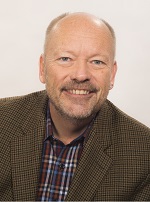World AIDS Day 2013 — December 1, 2013
It’s been 32 years since the AIDS epidemic officially began. I was 19 at the time. In the years that followed I watched the impact this horrible disease had on families, friends and in particular, the gay community. People were dying and it seemed there was nothing we could do about it. It was 1987 when Larry Kramer began shouting as loud as he could that we needed to fight for our lives and for our dignity.
For some of us those first decades were simultaneously tragic and heroic. Activists were radically changing medical and research institutions from the ground up while many in the GLBT community united to support each other and care for their dying lovers and friends. We came together and took care of each other when no one else would do it.
In 1987 we opened our first community care home. Twelve years later, a total of seven community care homes were open – five in Minneapolis (Samaritan House, Grace House I & II, Agape Home, Agape Dos) one in St. Paul (Clare House) and one in Stillwater (Hope House). We provided a home and compassionate end of life care. We supported family members and friends.
But as the years passed, our world as we knew it started to change – people were not dying as quickly and significant medical advances were being made. The development of antiretroviral drugs in the mid-1990’s completely turned around the AIDS epidemic. Our first resident moved out of Grace House because he no longer needed our services – he could live independently. We celebrated.
Thirty-two years after doctors saw their first cases of AIDS, scientists now say they have the knowledge to begin to end the epidemic. Doctors prescribe drug cocktails that reduce the amount of AIDS virus in a patients’ body to undetectable levels. But even with these medical advancements, only about one in four Americans with HIV has their virus controlled, according to the Centers for Disease Control and Prevention. The rest either aren’t getting care, aren’t getting consistent care or don’t know they’re infected.
In Minnesota, new infections increased by 8% over the previous year. Men who have sex with men still account for nearly 2/3 of all new infections. And while the rate of deaths has slowed considerably since the early days of the epidemic, people are still living with a life-threatening, incurable disease.
Unfortunately, many people don’t understand how HIV/AIDS has evolved and that it is still a major health crisis in our country. If there is one thing I know for sure, this epidemic is far from over.
Today, on World AIDS Day, we honor the strength, courage, and endurance of all people living with HIV/AIDS. Their strength is a testament to our progress in developing powerful anti-HIV drugs, and a beacon of hope in our fight to one day end this deadly disease.
World AIDS Day is an opportunity for people worldwide to unite in the fight against HIV, show their support for people living with HIV and to commemorate people who have died. Today at Clare Housing we remember all those who are no longer with us. In particular, we remember those who passed in the last year:
James D.
Kevin C.
Larry P.
Clare Housing remains a place where life can be lived. A place where people can receive the support and care they need to live their lives fully and with dignity. With a waiting list of 200 people, we will continue our mission to provide affordable housing and supportive care to those who need the services we offer.
On behalf of the residents of Clare Housing, its Board of Directors and staff, we thank the community for its continued support. We could not do this work without you.


